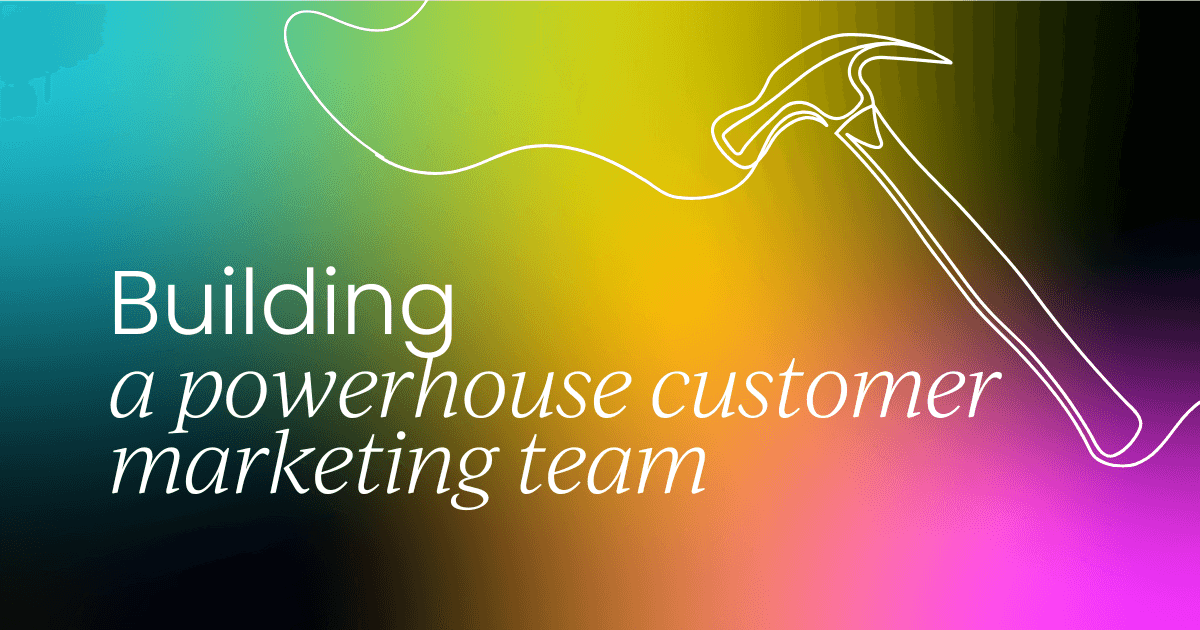This article comes from Allison Johnson’s insightful talk at our Customer Marketing Summit in San Francisco, check out her full presentation.
Building a powerhouse customer marketing team is both an art and a science.
I’m Allison Johnson, Global Head of Customer Marketing at Okta. Throughout my career, I’ve had the privilege of working across organizations of all sizes, from tech giants like Cisco, Salesforce, and Okta to innovative startups like Zuora and MuleSoft. These experiences have shaped my understanding of what it takes to structure and lead customer marketing teams that drive real business impact.
In this article, I’ll share strategies and insights—rooted in my own journey—that are essential for building and scaling a successful customer marketing team.

The pillars of customer marketing at Okta
At Okta, we think about customer marketing using three main pillars:
- Awareness
- Engagement
- Advocacy
These pillars guide everything we do and form the foundation of our strategy.
Customer marketing brings immense value to an organization. It drives upsell opportunities, fosters loyalty, strengthens brand impact, and supports other teams like product marketing, product management, and demand generation.
But with so many stakeholders relying on customer marketing, it can feel overwhelming to meet everyone’s expectations.
Here’s the reality: everyone wants a piece of your time and resources. Whether it’s securing a customer logo for a high-visibility placement—like getting it up on the Las Vegas Sphere—or finding a customer reference for a niche $2 million deal with specific integration requirements, the requests are constant.
So how do you make it all work with a small but mighty team? It starts with building a strong foundation and a cohesive team.
Five tips for building a great customer marketing team
I want to share five quick tips for building and structuring a powerhouse customer marketing team:
- Focus on your business value
- Harness your team’s superpowers
- Make data-driven decisions
- Scale your team with ongoing learning
- Automate with the right tools
These are lessons I’ve learned from balancing a range of demands and delivering results with a focused and driven group.
1. Focus on your business value
The first tip for building a powerhouse customer marketing team is simple: always focus on your business value.
In customer marketing, the landscape is constantly shifting, and we see this reflected in how teams evolve. Over the past five years, I’ve witnessed a transformation in how companies structure and leverage their customer marketing organizations.
Even within my two years at Okta, the changes have been significant.
One of the biggest challenges we face in the tech world is being asked to do more with less. It’s a phrase that probably feels all too familiar (and maybe a little triggering).
We’re tasked with driving year-over-year growth, meeting KPIs, and hitting targets like the number of customer stories produced or advocates highlighted. But at the same time, our teams, tools, and business environments are constantly changing.
The key to navigating this is hyperfocusing on your business value. Ask yourself:
- Where is your company in its business cycle?
- Is it the end of the year or the beginning?
- Does your sales team need leads, or are they looking for help closing deals with strong customer references?
Understanding these nuances allows your customer marketing team to adapt and deliver value where it’s most impactful. Align your goals with the broader company objectives, and don’t be afraid to rewrite those goals as the business shifts.
A customer marketing organization thrives when it evolves alongside the business, always staying laser-focused on what matters most to the company at any given time.


 11 min read
11 min read
 Follow us on LinkedIn
Follow us on LinkedIn




